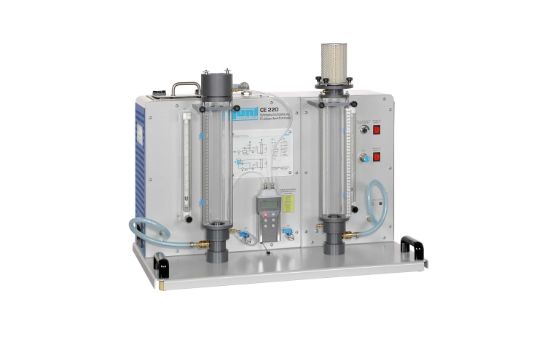If liquids or gases flow through a layer of solid particles and the fixed bed is loosened to such an extent that the solid particles can move freely, the fixed bed is transformed into a fluidised bed. The pressure loss of the fluid that is flowing through can be used to characterise a fluidised bed. Typical areas of application of fluidised beds include the drying of solids or roasting and combustion processes.
The fluidised bed formation in water and air can be observed using CE 220. The continuous phase (water or air) flows upwards through the fixed, dispersed phase above a porous sintered-metal plate. If the velocity of the fluid is less than the so-called fluidisation velocity, the flow merely passes through the bulk layer without causing the particles to move. This state is referred to as a fixed bed. At higher velocities, the bed is loosened and the particles begin to move. The fixed bed is thereby transformed into a fluidised bed. An increase in the velocity results in a vertical expansion of the fluidised bed.
The fluids’ currents are read on rotameters. The water flow rate is adjusted via the speed on the pump. The air volume flow can be adjusted via a separate flow control valve. An electronic, hand-held unit for measuring the pressure loss is included in the scope of delivery. The height of the fluidised beds is read on the scales of the tanks.
The tanks are removable, making it easy to change the bulk solid. Glass-shot beads in a range of particle sizes are provided as the bulk solid.

